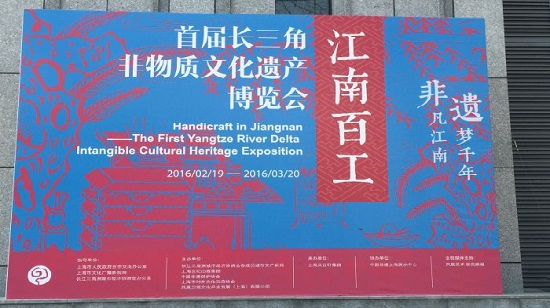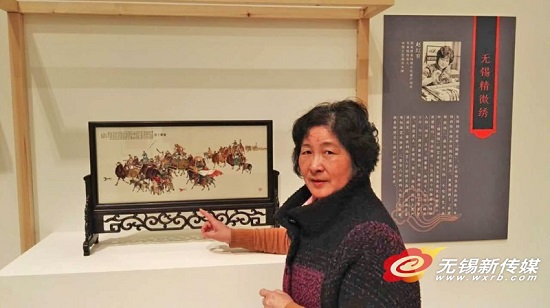Delicately crafted art works celebrating the cultural heritage of Wuxi, Jiangsu province, went on display for the first time at Duoyunxuan Art Center in Shanghai, on Feb 19.
 |
|
The First Yangtze River Delta Intangible Cultural Heritage Exposition with the theme "Handicraft in Jiangnan" opens at Duoyunxuan Art Center in Shanghai on Feb 19. [Photo/provided to chinadaily.com.cn] |
The Yangtze River Delta Intangible Cultural Heritage Exposition, with the theme "Handicraft in Jiangnan", features hundreds of precious craft works, including the Huishan clay figurine, Yixing purple clay teapots and refined embroidery, all originating from the city of Wuxi.
More than 100 intangible cultural heritage works featuring delicate and elegant designs are being displayed at the exposition, demonstrating the distinctive artistic tastes of the Yangtze River Delta region. Differing from the traditional layout, the exposition is divided into four themed areas adopting an interactive and fashionable style to offer visitors a more enjoyable experience.
The organizers invited many intangible cultural heritage inheritors to take part in the exhibition and introduce their art works. Hua Tianhua, one of the young folk artists from Wuxi displayed his intricate clay figurine works, which were very popular.
 |
|
Wuxi Huishan Clay Figurine highlights the intangible cultural heritage expo for its high artistic value of folk art. [Photo/provided to chinadaily.com.cn] |
The Wuxi Huishan Clay Figurine was included on the National Intangible Cultural Heritage List in 2006. Clay figurines used to be made in individual households as a cottage industry hundreds of years ago in Wuxi, and were sold along the street outside the Huishan Temple.
The clay is found in nearby paddy fields, a meter beneath the top soil. This sort of clay has less sand and is more malleable. Instead of being fired or baked like traditional clay, the figurines are air dried after being made into different shapes, preventing them from cracking. When they have dried, they are painted using water colors.
As one of the very few clay figurine inheritors, Hua insists that intangible cultural heritage works should be treated as pure art instead of as an item for commercial production. The ideological philosophy, which serves the core of the heritage, ought not to be lost, said Hua.
 |
|
Zhao Hongyu, the handicraft artist and the inheritor of refined embroidery, introduces her work "Silk Road" to visitors at the intangible cultural heritage expo. [Photo/wxrb.com] |
The exposition also launched an initiative to set up a Yangtze River Delta intangible cultural heritage association to build up a platform for the demonstration, cooperation and exchange of intangible cultural heritage projects in the area. More works from Wuxi will have the chance to captivate visitors here in the future.